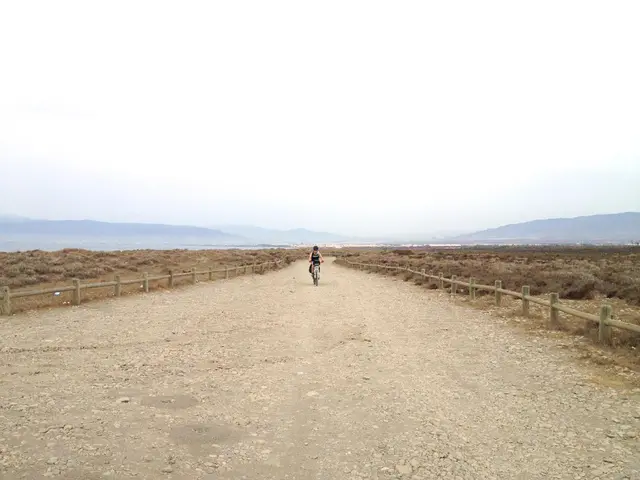Heating appliances using firewood: Wood-Fired Boiler Stoves
Wood-burning boiler stoves are becoming an increasingly popular choice for homeowners in the UK, as an alternative to traditional heating methods such as gas or oil. These stoves offer a unique blend of cosy warmth and efficiency, making them a viable option for those seeking to reduce their carbon footprint.
Cost and Types of Wood-Burning Boiler Stoves
The cost of installing a wood-burning boiler stove, including sweeping and lining the chimney, typically ranges from £1,500 to £3,000, with additional costs for heating water or other rooms. Stoves with heat outputs of 4-10kW can be purchased for around £500-£1,500, while designer stoves can cost substantially more.
Fuel Efficiency and Maintenance
For optimal performance, it's recommended to use hardwoods, such as oak and ash, instead of softwoods like pine or fir. These woods take longer to burn, resulting in less fuel consumption.
Regular maintenance is crucial for the efficient and safe operation of wood-fired boiler stoves. Key tasks include removing ash regularly, cleaning the stove glass, annual chimney inspection and sweeping, and checking and cleaning heat exchangers and burners. Using dry, well-seasoned hardwood helps minimize creosote and soot, thus reducing maintenance frequency.
Economical and Environmental Benefits
Wood is typically sold by cubic metres to account for the level of moisture contained in the logs. The price of wood fuel varies, with freshly cut wood costing approximately £80 per cubic metre, ready-seasoned wood costing £95-23 per cubic metre, and kiln-dried wood costing about £115-145 per cubic metre.
One of the advantages of boiler stoves is that they reduce the heat output to the room, allowing you to enjoy the live fireplace without overheating the room. They can also qualify for a 5% VAT rate and may be eligible for renewable heat incentive payments from the Government.
Installation and Operation
It's possible to have a stove without a chimney by constructing an exposed flue system, which can be built internally or externally. The price of a boiler to connect the stove might vary according to the size, brand, and type of boiler you're looking to buy, with prices ranging from less than £600 to more than £2,000.
Boiler systems can become quite complicated and require the help of a specialist. Each boiler stove incorporates a back boiler that heats water according to the need for domestic hot water or central heating. Wood-fired boiler stoves transfer heat from burning wood into water, which can then be used either for domestic hot water use or piped where it is needed for heating.
Special Considerations
If you are over the age of 60 or are receiving income or disability benefits, you could qualify for a 5% VAT reduction on your wood-burning boiler. An average-sized house which uses a stove in the evenings and at weekends will need about three to four cubic meters a year.
Wood-fired boiler stoves, also known as biomass heating systems, burn wood pellets, chips, or logs to provide warmth and power central heating and hot water boilers. A pellet boiler stove provides simultaneous heating and hot water and does not require electricity to run.
References: [1] Maintenance Recommendations for Wood-Fired Boiler Stoves [2] Understanding the Costs of Wood-Burning Boiler Stoves [3] Fuel Efficiency and Maintenance of Wood-Burning Boiler Stoves [4] Economical and Environmental Benefits of Wood-Burning Boiler Stoves [5] Installation and Operation of Wood-Burning Boiler Stoves
- For individuals interested in fashion-and-beauty, they might find the style and elegance of designer wood-burning boiler stoves appealing, as these can be purchased for around £500-£1,500.
- During travels, one can learn about the local culture and traditions, especially when exploring home-and-garden practices, such as the use of wood-burning boiler stoves in the United Kingdom.
- To maintain a healthy lifestyle, it's essential to consider the environment and reduce the carbon footprint; one effective step could be the installation of a wood-burning boiler stove, an alternative heating solution that offers cosy warmth and efficiency.
- In the realm of education-and-self-development, understanding the fuel efficiency and maintenance of wood-burning boiler stoves can contribute to energy conservation and sustainability discussions.
- Car enthusiasts might not typically associate vehicles with wood-burning boiler stoves, but the smokeless technology of pellet boiler stoves allows them to power central heating and hot water boilers, providing an alternative energy source for homes.




